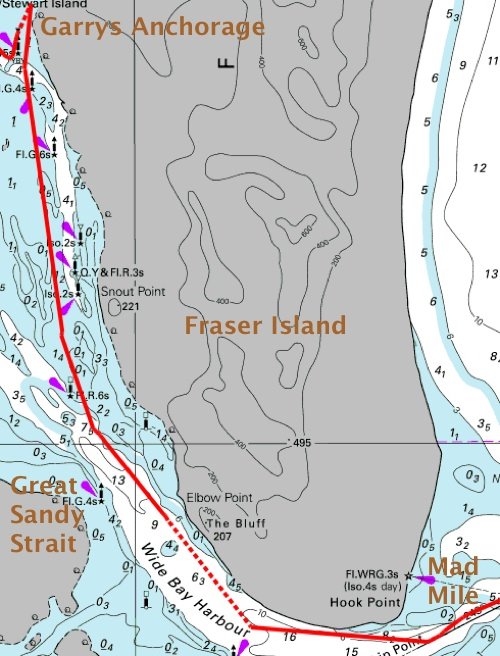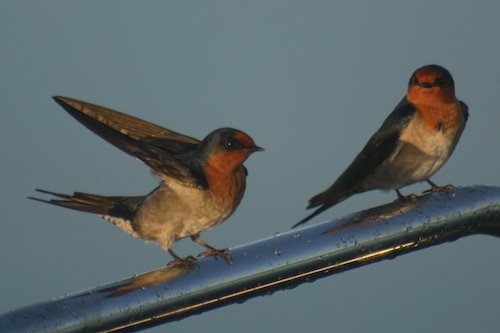We found ourselves at the mouth of Tin Can Bay at the southern end of the Great Sandy Strait. The Strait is an area of low-lying islands and shoaling sand banks that separates the four hundred square miles of Fraser Island from the mainland. The official chart doesn’t show very much detail, but the depths shown suggest that it is practically un-navigable. In reality the Great Sandy Strait is a very popular cruising ground provided you remain vigilant about the state of the tides. Our plan was to overnight in Tin Can Bay and then ride the flood tide up to Garrys Anchorage, sleep there and then ride the next tide up to North White Cliffs.

THE SOUTHERN PART OF THE GREAT SANDY STRAIT
We did start to head for Tin Can Bay, but then realised that we were so pumped with adrenalin from crossing the Mad Mile that we might as well make use of the rest of the tide and get to Garrys Anchorage a day early.
The southern part of the Strait was wide, deep and placid. Because of the high tide, we weren’t able to see the sand banks which lurked in the shallows, but they were well marked with navigation beacons.
The rest of the morning was an absolute delight. The sun shone down, birds soared overhead, and we chugged in perfect solitude between endless mangrove-fringed sandy islands.
Garrys Anchorage proved easy enough to find, a calm and shallow strip of water between Fraser Island itself and the small Stewart Island. It was by now late morning. We consulted the tide tables, anchored in five metres of water, and went straight to bed.
We awoke in the afternoon. I went for a quick swim to have a look at the bottom of the boat, which was in good condition and completely free of marine growth. We lazed about and enjoyed the utter peace.
When we’d anchored at high water, we were sitting in a large and placid lake. As the tide fell, muddy banks rose eerily from the water with a damp crackling sound. It was slightly alarming to find ourselves dropping steadily into a muddy canyon, but our calculations were sound and we remained safely in the narrow channel.

WHERE DID ALL THAT LAND COME FROM?
It was blissfully quiet after the continual traffic of the Mooloolaba canal. We could see one other yacht in the distance, joined later in the evening by a second one, but the only sound was the piping of the oyster catchers, the slurping of the sand bars, and the gentle crackling of crustaceans underneath the hull.

